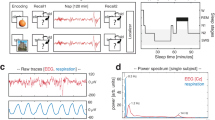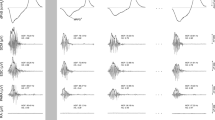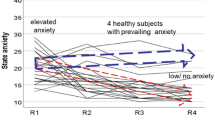Abstract
IT is fairly well known that there are slow rhythmic changes in the nervous system with frequencies less than 1 hertz which are supposed to be due to the irradiation of excitation from the respiratory centre during inspiration and/or expiration1,2. Some of these changes manifest themselves as rhythmic movements of the extremities.
This is a preview of subscription content, access via your institution
Access options
Subscribe to this journal
Receive 51 print issues and online access
$199.00 per year
only $3.90 per issue
Buy this article
- Purchase on SpringerLink
- Instant access to full article PDF
Prices may be subject to local taxes which are calculated during checkout
Similar content being viewed by others
References
Adrian, E. D., and Buytendijk, E. J. J., J. Physiol., 71, 2, 121 (1931).
Sergijevskij, M. V., Dychatelnyj centr mlekopitajushcich shivotnych. (Medgiz, Moskva, 1950).
Author information
Authors and Affiliations
Rights and permissions
About this article
Cite this article
DVOŘÁK, J. Interaction of Slow Rhythmic Changes in the Nervous System. Nature 198, 1095 (1963). https://doi.org/10.1038/1981095a0
Issue date:
DOI: https://doi.org/10.1038/1981095a0
This article is cited by
-
Investigations into the fluctuations of proprioceptive reflexes in man
Pfl�gers Archiv European Journal of Physiology (1970)



